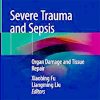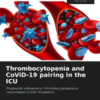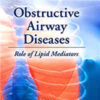Predicting the Hemodynamic Response to Prone Positioning
criticalcarehorizons.comGraphical models of physiology are heuristically appealing as they facilitate qualitative conclusions at the bedside of the critically ill. Historically, the Rahn diagram has portrayed the physiology of the lungs, chest wall and respiratory system, while the Guyton diagram has illustrated cardiovascular physiology. As contemporary methods of hemodynamic monitoring, and their predecessors, are inexorably influenced by the interaction between the respiratory and cardiovascular systems, a qualitative graphical model for mechanical heart-lung interaction holds clinical utility. This short report will present an illustrative clinical case, briefly review the physiological underpinnings of the Rahn and Guyton Diagrams and then introduce a novel combination thereof. It is expected that this new diagram will clarify the case at hand, as well as facilitate the transfer of cardio-respiratory theory to clinical practice.

















